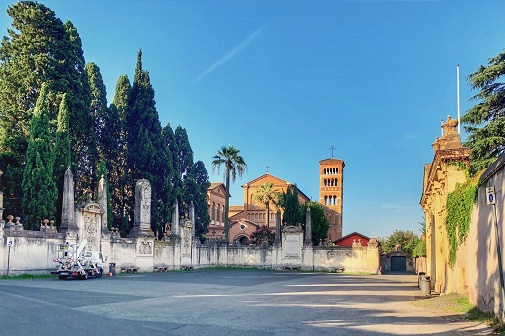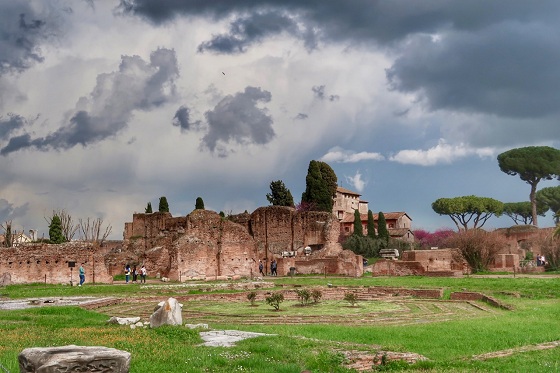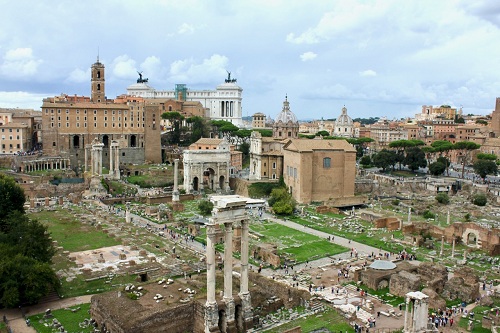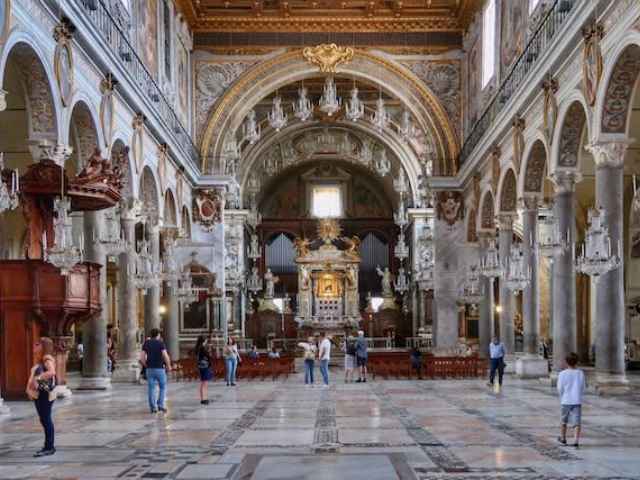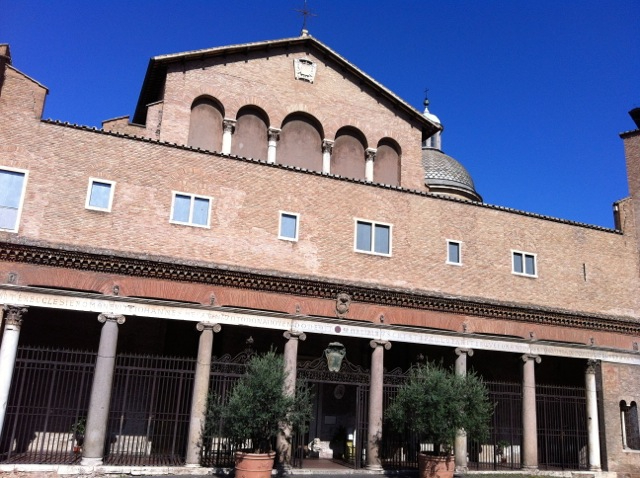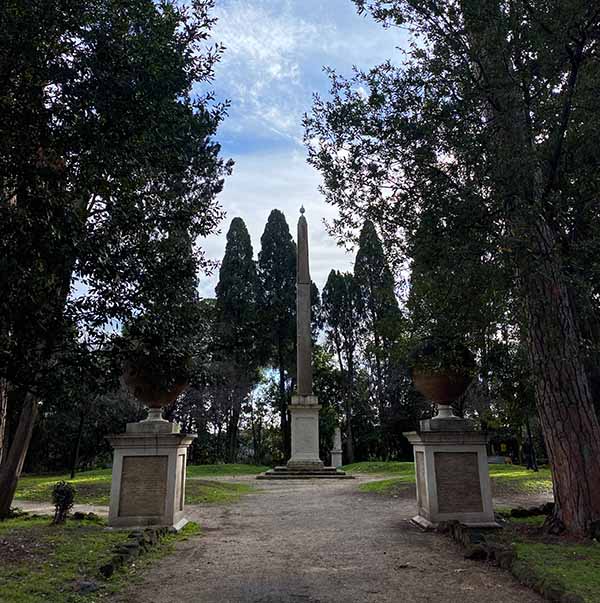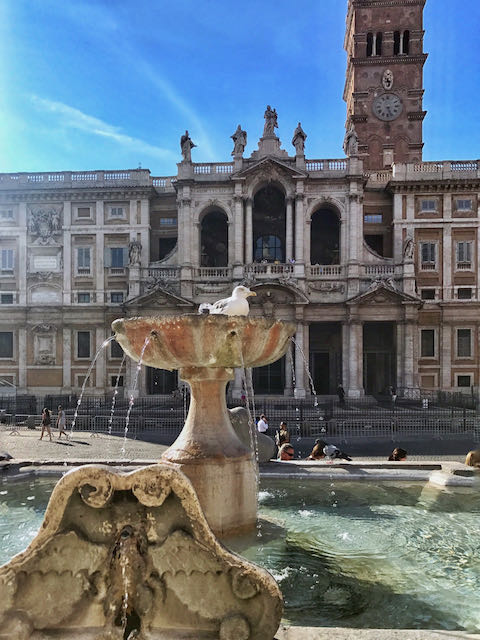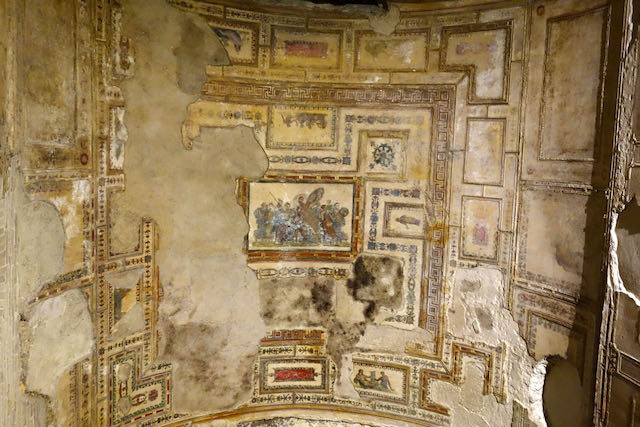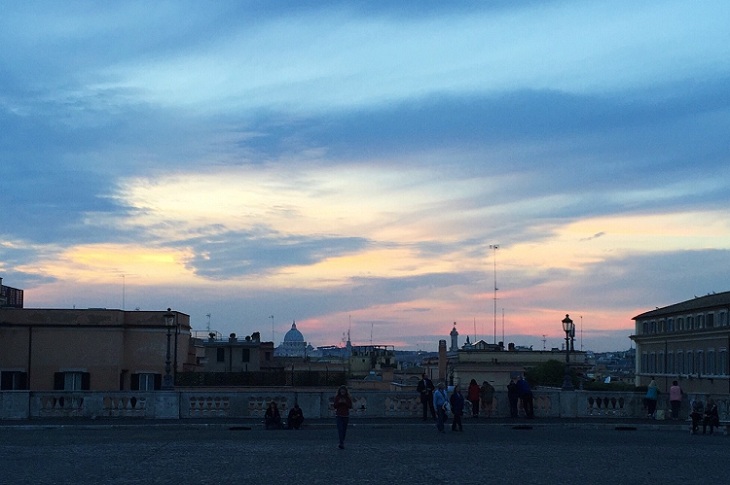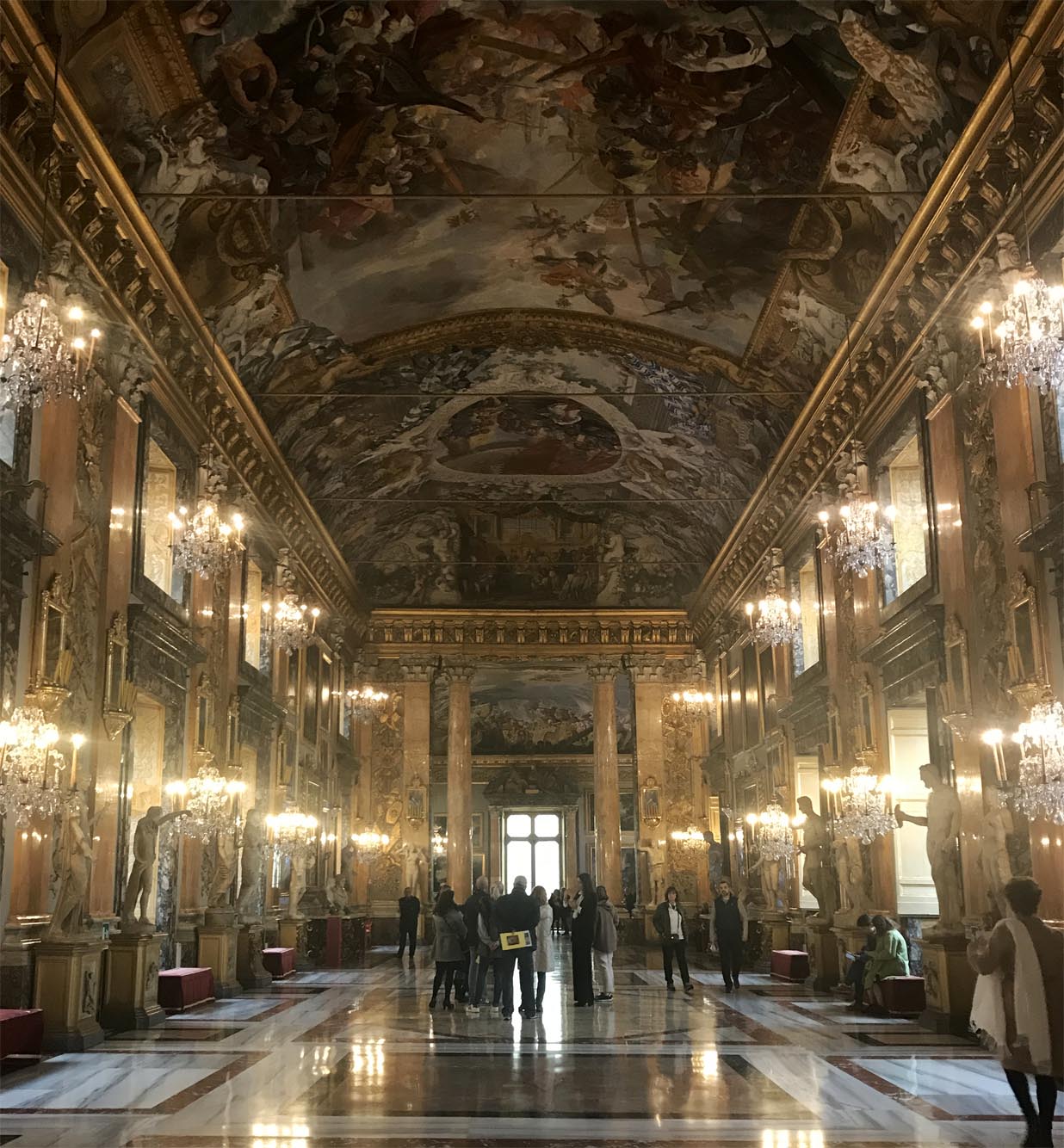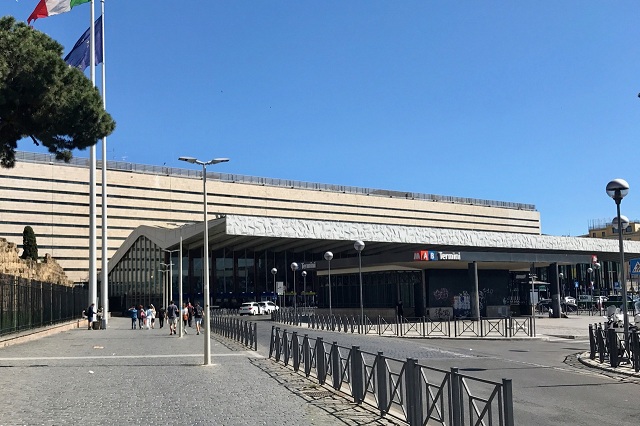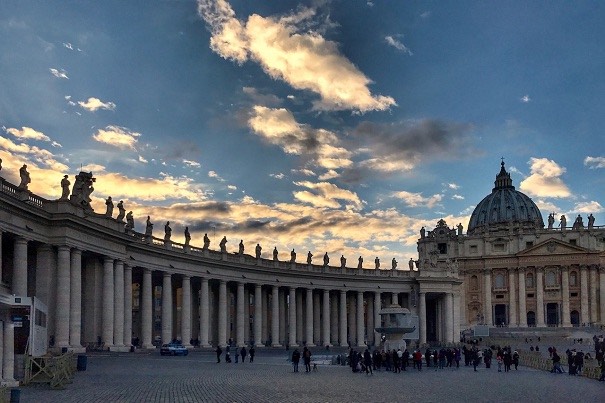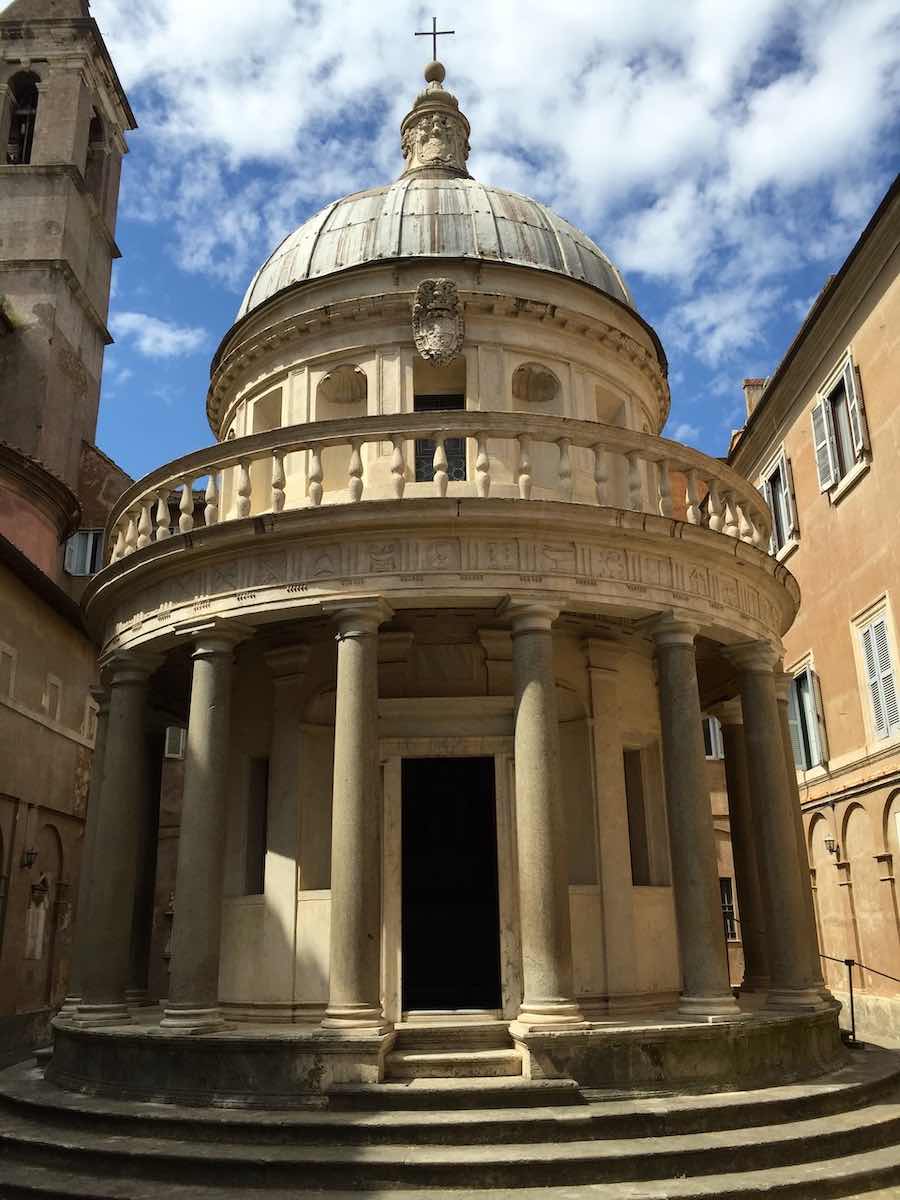- Sign up & get a FREE ebook Subscribe NOW!
- Romewise Home Page
- What to Do in Rome
- Seven Hills of Rome
Discover The Seven Hills Of Rome And How To Visit Them!
Have you heard of the Seven Hills of Rome?
Part of Rome's founding lore is that it was built on seven hills.
But what is the history of these hills?
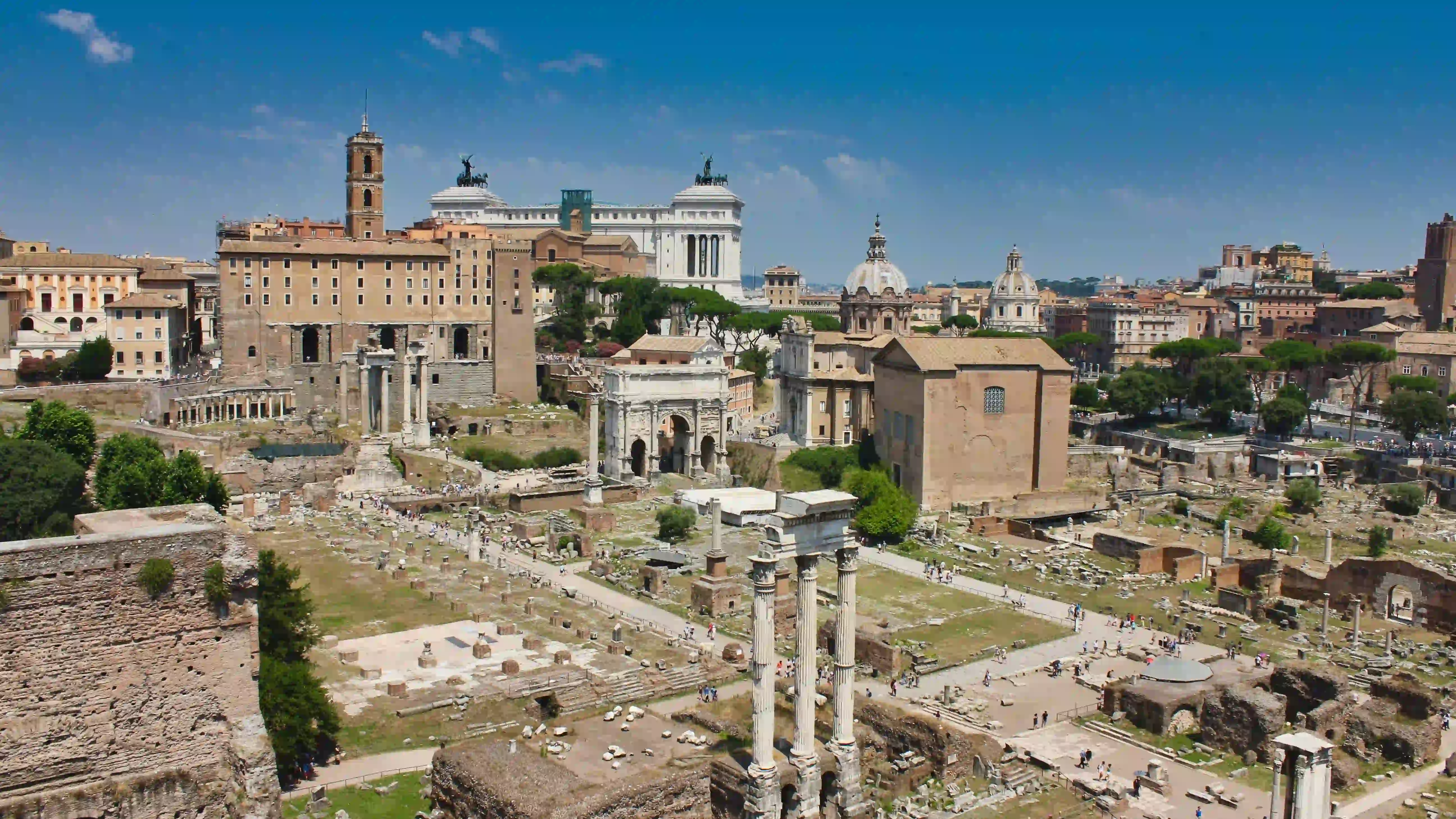 One of the best views in Rome is from high on the Palatine Hill - one of the original 7 hills of Rome.
One of the best views in Rome is from high on the Palatine Hill - one of the original 7 hills of Rome.I love exploring the hills of Rome, and after more than 20 years living here, I know them all well.
On this page, I'll share with you the names and locations of the seven hills, along with the most interesting things you can do on each one.
Keep an eye out for a few bonus tidbits as well.
Facts about the seven hills of Rome and things to see and do there
On this page, you'll find:
- What are the seven hills of Rome?
- What is the story of the seven hills?
- The names of the hills of Rome and what to do and see on each one
- What are some other hills in the Eternal City?
- Why does the Bible refer to Rome's seven hills?
- What is the movie The Seven Hills of Rome about?
- A map of the seven hills in Ancient Rome and today
What are the seven hills of Rome?
The original seven hills were the Aventine, Palatine, Capitoline, Esquiline, Quirinal, Viminal and Caelian hill.
The hills of Rome were once individually inhabited.
The oldest settlements were founded on the Palatine and Esquiline.
Later, the Sabines settled on the Quirinal Hill.
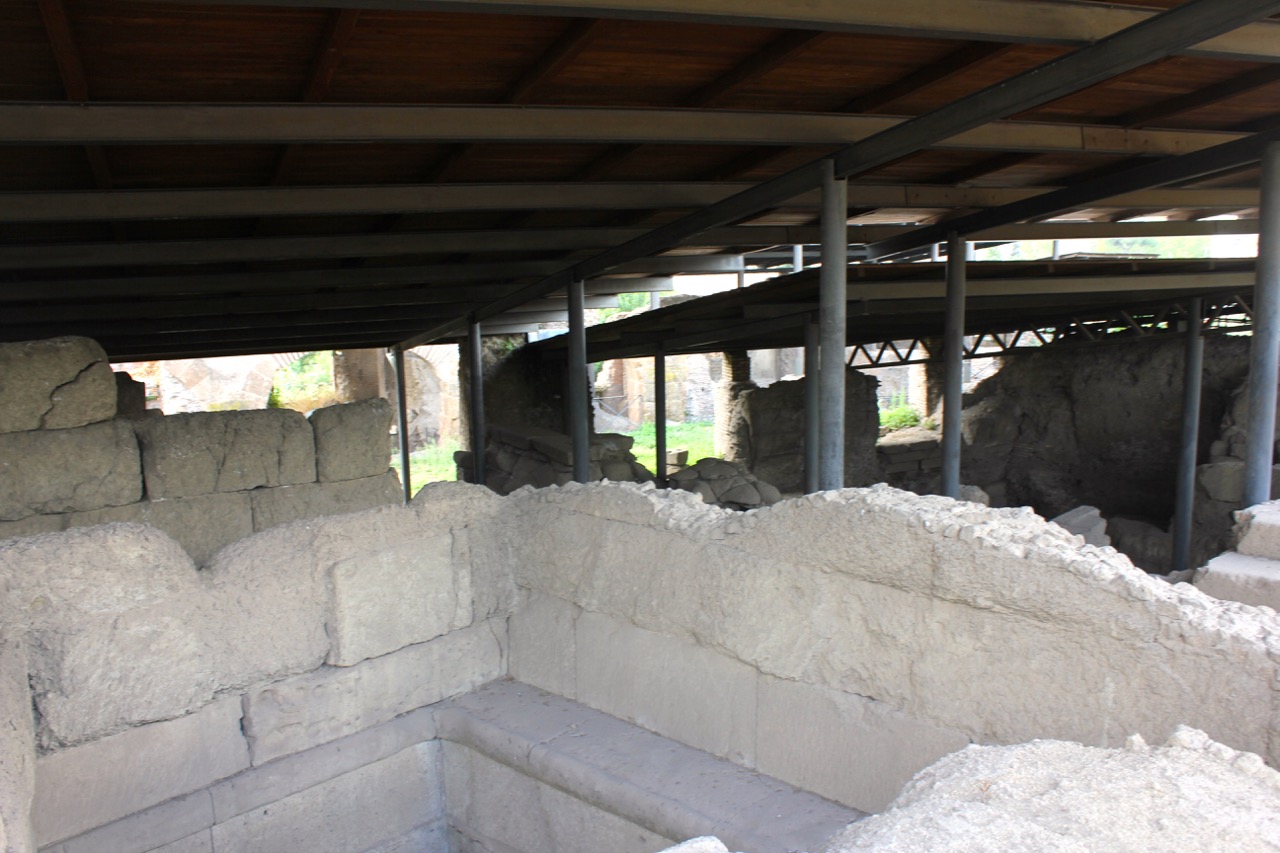 The remains of the structures that Romulus supposedly lived in on the Palatine hill are some of the oldest anywhere in Rome!
The remains of the structures that Romulus supposedly lived in on the Palatine hill are some of the oldest anywhere in Rome!The hills protected the people living there, and the location by the river Tiber was, of course, a strategic decision.
Now, the seven hills of Rome are the sites of monuments, churches, parks and palaces, and you can still visit all of them today.
All this talk of hills may give you the impression that you will be walking up and down steep slopes during your visit.
However, over the centuries, these hills have become much less hilly.
Between the construction of ancient and modern buildings, excavations, and changes at the ground level, while there are some higher points, all that remains of some of these hills is their name.
What is the story of the seven hills of Rome?
The Etruscans conquered the area in the 6th century BCE, and united all the hills of Rome while mainly settling on the Capitoline Hill themselves.
The first kings of Rome were Etruscans.
When the last Etruscan king was chased out of the city, the Roman Republic was founded.
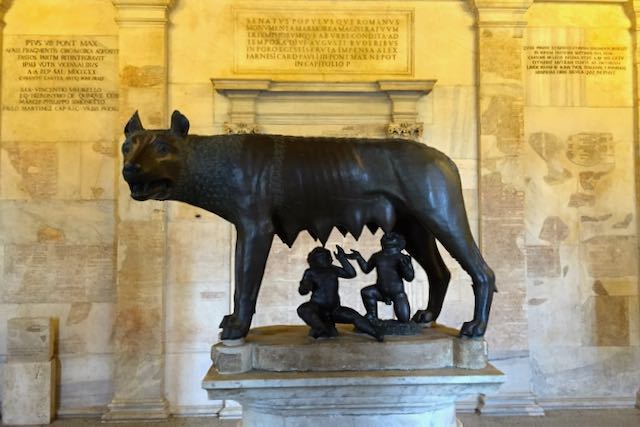 The she-wolf statue in the Capitoline museums is the most famous depiction of the Rome foundation story
The she-wolf statue in the Capitoline museums is the most famous depiction of the Rome foundation storyThe legend of the founding of Rome also takes place on these same hills.
Romulus and Remus were found and nursed by the she-wolf (Lupa in Italian) in a cave on the Palatine Hill.
Eventually, Romulus would become the founder of the new city thanks to a curious competition. More on this below.
🙌 See The Capitoline Museum Your Way 🙌
Enjoy this private tour of the Capitoline Museums with priority entry and expert commentary on its most celebrated masterpieces.
Aventine Hill | Aventino
The southernmost of Rome's seven hills, the Aventine Hill was once home to a temple to the goddess Diana but sadly nothing remains of the temple today.
The hill features heavily in the Roman mythology of its founding, involving Romulus and Remus.
The twins fought over who would be the founder of a new city via augury, an ancient Roman practice of observing the behaviour of birds and interpreting such as omens.
Remus set his augury site on the Aventine Hill and Romulus on the Palatine Hill, with both of them claiming to have seen omens that meant they each had won.
Romulus and Remus could not agree on who was the winner, so they ended up fighting.
Romulus ended up killing his brother and founded Rome, naming the new city after himself.
This supposedly happened on April 21, 753 BCE, which is why, to this day, we celebrate Rome's birthday (the "natale di Roma") on April 21 each year.
Nowadays people visit the Aventine hill to see the Roseto Comunale, a spectacular rose garden.
They also visit for the Giardino degli Aranci, a garden filled with fragrant orange trees found at the highest point of the hill, with fabulous views.
The churches of Santa Sabina and Sant'Alessio are also well worth visiting, and played an essential part in the Aventine Hill's history.
Don't forget to take a peek through the Malta keyhole for a spectacular surprise!
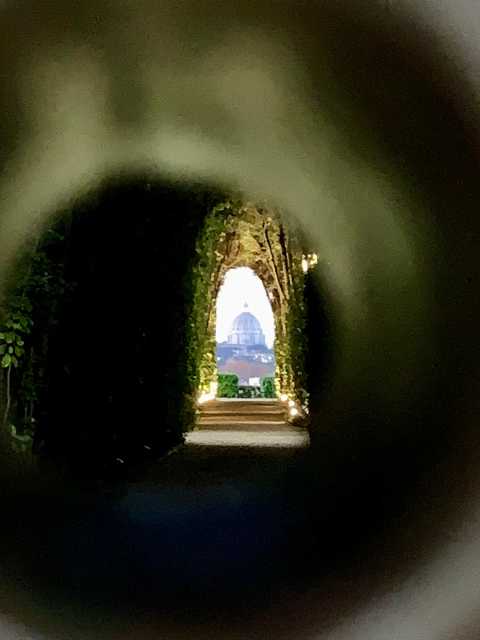 Capturing the view of St Peter's Basilica through the Malta keyhole is more challenging than you might think!
Capturing the view of St Peter's Basilica through the Malta keyhole is more challenging than you might think!Palatine Hill | Palatino
One of the two uninhabited hills, the Palatine Hill is the most central and is at the heart of Rome's founding mythology.
It was here that the Lupa (she-wolf) nursed Romulus and Remus and was where Romulus built his home.
Later in the history of the Roman Empire, it was on the Palatine that the palace of the Roman emperor could be found.
Our modern word 'palace' derives from the word palatino.
Today the entire hill is an open-air museum, plus you can be guaranteed some amazing views.
When you buy tickets to visit the Colosseum and Roman Forum, the Palatine hill is also included in the entrance fee and is an unmissable sight, filled with layers of ruins from ancient Rome and beyond.
Jump start your trip to Rome with a free ebook 😀
Sign-up to our free newsletter and receive our Quick Start Guide to Rome ebook which share's everything you need to know to plan the perfect trip to the Eternal City 🙌
Capitoline Hill | Capitolino
Like Palatine Hill, Capitoline Hill is uninhabited.
Once the home of ancient Rome's most important temples, primarily the temple of Jupiter, the Capitoline has been the center of government for centuries.
Having been built on and remodelled in Medieval and then Renaissance times, much of the ancient architecture is now buried beneath the main piazza.
Visiting the Capitoline Museums will give you a glimpse at some of the most impressive relics from the Imperial era.
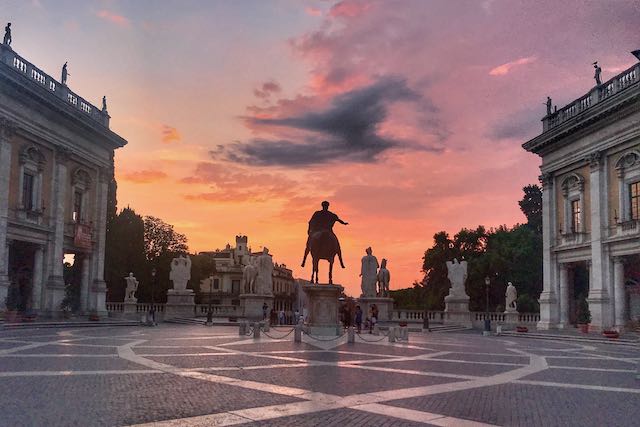 While the buildings and piazza design are relatively recent, the Capitoline Hill has been at the center of Roman life for millenia
While the buildings and piazza design are relatively recent, the Capitoline Hill has been at the center of Roman life for milleniaThe Roman city council is housed in the spectacular Palazzo Senatorio in the middle building.
To the left and right, the Capitoline Museums are located in the Palazzo dei Conservatori and the Palazzo Nuovo.
Each museum houses important works from ancient and later Roman artists and sculptors.
From the top of Capitoline Hill views of the Roman Forum and beyond are unrivalled.
The Basilica of Santa Maria in Ara Coeli is home to important relics from Helen, mother of Emperor Constantine.
It also holds other relics from the Church of the Holy Sepulchre in Jerusalem, which legend holds is the site where Jesus was crucified.
For lots more of the history and other landmarks on this central hill, visit our page all about Capitoline Hill.
Caelian Hill | Celio
Perhaps not the well-known, the Caelian Hill is still important in ancient Roman history.
It is home to several important churches, including Santi Quattro Coronati with its stunning interior decorations.
Another beautiful church on the Caelian Hill is the Basilica of Santi Giovanni e Paolo, an ancient church halfway up the hill.
Underneath the church you can visit one of Rome's most fascinating historical attractions, the Roman Houses of Celio.
Dating from the 2nd and 3rd centuries, the houses now form a museum displaying spectacular frescoes that are surprisingly well preserved.
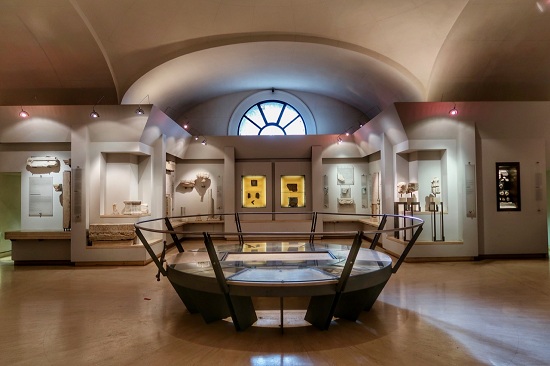 The Roman Houses of Celio allow you to see the ruins of some ancient Roman homes, as well as this excellent small museum filled with finds from the site over the centuries
The Roman Houses of Celio allow you to see the ruins of some ancient Roman homes, as well as this excellent small museum filled with finds from the site over the centuriesAlso of interest, and a great place to escape the crowds on a hot day, is the Villa Celimontana with its famous and spectacular gardens.
The park comes complete with its very own ancient Roman obelisk.
Esquiline Hill | Esquilino
Esquiline Hill is often cited as the highest of the hills of Rome, although some sources accord that accolade to the Quirinal Hill.
It overlooks the valley where the Colosseum was built and offers spectacular views today.
Once a posh residential district, Esquiline Hill is home to some important churches.
This includes the spectacular Basilica of Santa Maria Maggiore, one of the first churches dedicated to the Blessed Virgin Mary and one of the four papal basilicas. And even more famous now that Pope Francis is buried here.
On the southern edge of the Esquiline hill, there is a spur known as the Oppian hill. The Oppian Hill is not one of the "7 Hills of Rome" but rather, it's part of the larger Esquiline Hill.
Here you will find the ruins of the Domus Aurea, or Golden House, a massive palace complex that Emperor Nero built in 64 CE.
The Domus Aurea is famous for stunning ancient Roman frescoes and is undoubtedly worth a visit, taking you underground to walk the halls of possibly the grandest villa ever built.
The unexpected discovery of the well-preserved frescoes and decoration in the 15th century inspired Raphael and Michelangelo, along with countless other Renaissance artists.
Quirinal Hill | Quirinale
The most northerly of the seven hills is the Quirinal Hill, famous as the site of the Quirinal Palace.
The Palazzo del Quirinale was once home to the pope, then to the King of Italy.
Today, it's the residence of the President of Italy.
The views from the piazza in front of the Quirinal Palace are superb, and it's a great spot to watch the sunset.
This neighborhood of Rome is known for its important galleries and museums.
This includes the fascinating Scuderie del Quirinale, which organizes exhibitions of both ancient and modern art, and Palazzo Colonna.
You are also only a short walk from the famous Trevi Fountain.
No matter what season you visit Rome, here are 4 essential things we recommend never leaving home without:
Viminal Hill | Viminale
Between the Esquiline and Quirinal hills is Viminal Hill, the smallest of Rome's hills.
It is also the location of Roma Termini, Rome's main train station.
On the Viminal hill you'll find the impressive remains of the Baths of Diocletian, an ancient complex of public baths on which a large monastic complex and church was founded.
The nearby Palazzo Massimo Alle Terme is a fascinating museum that is certainly worthy of a visit.
The perfect 3-day itinerary in Rome
Trying to figure out how to organize your visit to Rome? I've got the perfect 3-day itinerary for first-time visitors (or those who have not been here in a while.) It works for a 2.5 day visit as well.
In my 3-day itinerary, you'll see all the major must-see Rome attractions like the Vatican, Colosseum, Trevi Fountain, Pantheon, Piazza Navona, Spanish Steps, and much more.
And if you have more time, or want suggestions for extra/other things to do, you'll find that there too.
Visit my page with the best 3-day itinerary in Rome for first-timers.
What are some other hills in Rome?
As I mentioned, there are more than seven hills in Rome.
As the city expanded, more hills were brought inside its boundaries.
These are the most important ones:
Vatican Hill | Vaticano
Located across the Tiber is the Vatican Hill, although today there is no trace of its ancient slopes.
Home to Vatican City, with St Peter's Basilica and the Vatican Museums, it is an important and holy place, attracting millions of visitors each year.
St Peter's Basilica is the largest church dedicated to Saint Peter anywhere in the world, built upon the location of the saint's tomb.
No visit to Rome is complete without viewing this outstanding example of Renaissance architecture and its welcoming entrance of St Peter's Square.
Pincian Hill | Pincio
In my video below, I take you through the Pincian Hill.
To the north of the Quirinal Hill and in the historic center is the Pincian Hill.
While not one of the traditional seven hills in Rome, it lies within the boundary wall built by Roman Emperor Aurelian in the 3rd century.
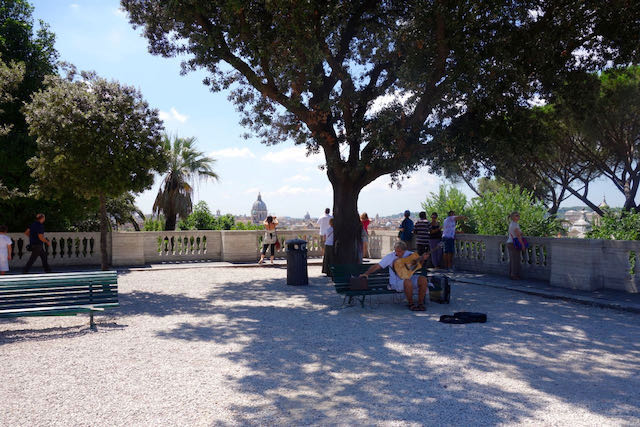 The Pincio terrace on the edge of the Villa Borghese park is a lovely place to relax and enjoy the spectacular views
The Pincio terrace on the edge of the Villa Borghese park is a lovely place to relax and enjoy the spectacular viewsThe Pincio is home to the Villa Borghese, one of the prettiest parks in the Eternal City.
It also contains the Galleria Borghese, which houses a spectacular art collection.
Nearby are many galleries and museums housing ancient and modern artifacts and artworks.
The Pincio terrace is a wonderful and romantic place to get some sunset photos.
Janiculum Hill | Gianicolo
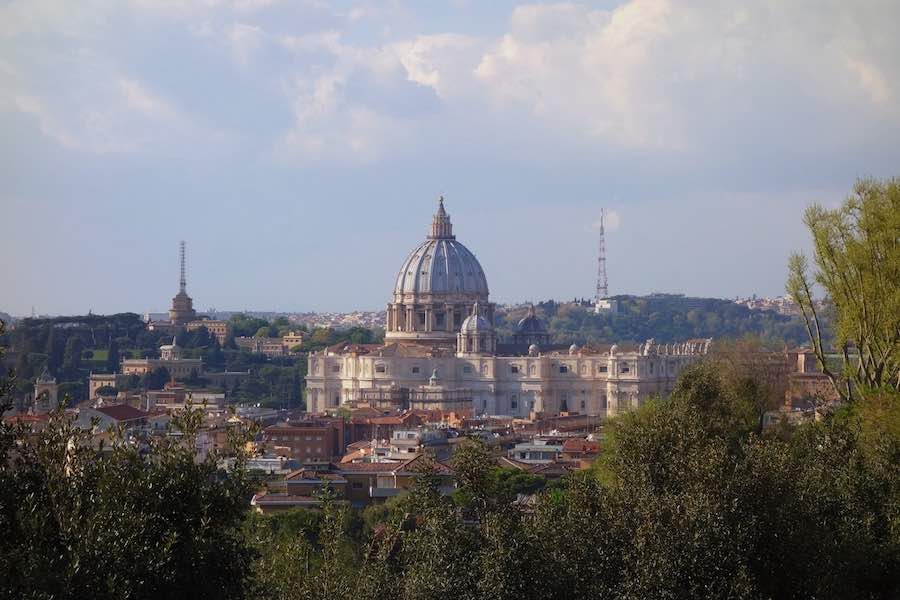 As the Gianicolo is a little outside the city center, the views of St Peter's Basilica and beyond are breathtaking
As the Gianicolo is a little outside the city center, the views of St Peter's Basilica and beyond are breathtakingThe Gianicolo Hill is one of the tallest hills in the city but is not among the original seven.
It's beyond the boundaries of the ancient city and lies to the west of the Tiber river.
A popular place for Romans to visit, there are lots of attractions to explore.
You'll find the church of San Pietro in Montorio, where the site of St Peter's crucifixion is marked by Bramante's perfectly round Tempietto.
The Janiculum hill is also where visitors can take in a spectacular view of the Eternal City, complete with magnificent architecture and landmarks.
Find out more on our page all about this special hill.
The best way to understand the geography of Rome and how the ancient city intersects with the modern is to take a walking tour at the start of your trip.
Why does the Bible refer to the 7 hills of Rome?
The seven hills of Rome are believed to be referenced in the New Testament.
The Book of Revelation refers to the 'Whore of Babylon' - an entirely symbolic female figure - sitting on 'seven mountains.'
This is taken as referring to Rome's seven hills and is believed to be a reference to the Roman Catholic Church.
Ready to plan your trip?
Book your train
Planning to travel between cities in Italy and other parts of Europe?
Use Trainline to see all the different options available across the different rail companies.
Find your hotel
Find your perfect place to stay in Rome.
Use Booking.com to choose between hotels, guesthouses, and self-catering apartments in neighborhoods throughout the Eternal City.
Buy your TurboPass
Purchase the convenient Turbopass and visit all of Rome's top attractions including the Colosseum, Pantheon, and Vatican.
With one handy pass, it's all included.
What is the movie The Seven Hills of Rome about?
The Seven Hills of Rome is a movie from 1958.
It stars the great tenor Mario Lanza as a singer searching for his fiance in Italy.
The plot involves him getting a job singing at a club and eventually finding his true love.
The film was a box office hit and was a joint American-Italian production.
Lanza died in Rome in October 1959.
Seven Hills Of Rome Film
This classic 1950s movie was actually filmed in Rome.
So as well as being an entertaining story, the film is a snapshot of Rome and Roman life at the start of the economic boom in Italy - well worth a watch!
Disclosure: If you make a purchase through a link on this page, I may receive a small commission - at no extra cost to you. Thank you for supporting my site!
A map of the seven hills in Ancient Rome and today
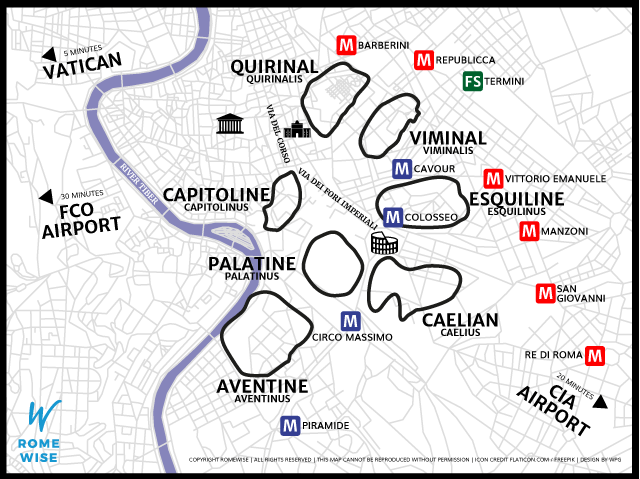 This map indicates the original hill locations in ancient times and how they correspond to the modern city today
This map indicates the original hill locations in ancient times and how they correspond to the modern city todayRomewise's Top Travel Resources
Ready to book your trip to Rome? Take a look at these helpful links to companies we use and trust:
- Keep your travel spending simple with the Wise card, which removes all the worry about exchange rates and high transaction fees all over the world
- Search for and book your perfect accommodation
- Our complete guide to what to pack for Rome
- The number one travel accessory, a multi-point travel adapter and voltage converter
- Browse a huge range of tours in Rome and beyond
- Experience unique tours and special access to Rome's most popular sights
- Protect yourself with comprehensive travel insurance
Within this post there are some affiliate links for products and services. For more details about our affiliate policy click here.
Get your 100% free Rome trip planner now!
Simply sign-up today for our free newsletter and get the Romewise Quick Start guide to Rome:
We are committed to respecting your data. Click for our Privacy Policy.
Comments? Questions? Suggestions?
Please come over to the private Romewise Facebook group and join in the conversation.
You will often find me there, happy to answer your questions / comments!
You will also meet other Rome lovers and experts, too.
What are you waiting for?
- Romewise Home Page
- What to Do in Rome
- Seven Hills of Rome

